

This year marks the 10th anniversary of the 2010 Shanghai World Expo.
Ten years ago, the world witnessed an open, prosperous and modern China during the six-month grand pageant. The glorious exhibitions provided the world with immeasurable enlightenment and enjoyment, at which China and countries from around the globe showcased their culture and prowess.
Ten years later, the Shanghai Expo site has presently become a popular tourist attraction in the city. Some of the buildings created for the expo, such as the China Art Museum and River Mall, have become the main venues for hosting cultural events.
There is an old saying that a picture is worth a thousand words. This sentiment especially rings true when it comes to describing the modernity, vitality and beauty of the 2010 Shanghai World Expo.
Although the majority of the pavilions have been removed from the once magnificent Expo Park, this three part series will make an effort to construct, through both the lenses and texts, an "online World Expo," the curtain of which will never drop.
The first part focuses on the legendary China Pavilion, the Chinese elements at the Expo, among other topics.
China Pavilion: Reflecting Chinese wisdom and culture
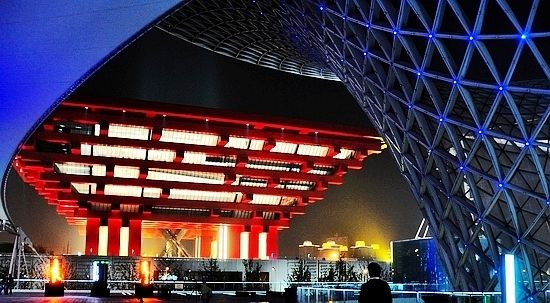
The China Pavilion under the evening sky. (File photo: Li Zhenyu)
The China Pavilion was the most eye-catching and then "hottest" pavilion at the Expo Park.
The charm of this giant red pavilion, based on my personal experience and on-the-ground interviews, originated from its contour design with several distinctive features inside.
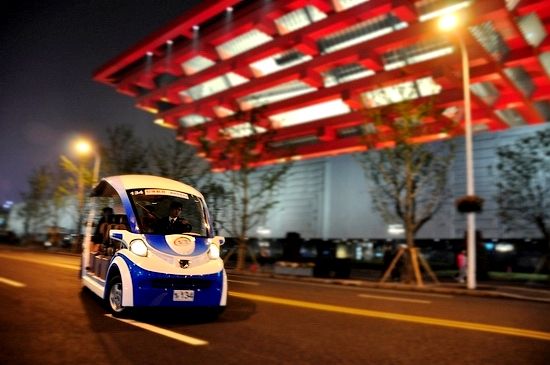
A specially-designed battery-powered car flashed by the China Pavilion at the World Expo Park. (File photo: Li Zhenyu)
The facade of the China Pavilion was among the most impressive. There were some 200 national pavilions at the Expo Park and The Crown of the East stood out as both the largest and the highest one. Its exterior design reflected the spirit and disposition of Chinese culture well.

Experiencing Chinese culture in the China Pavilion (File photo: Li Zhenyu)
Entering into the pavilion, you may experience the original Chinese culture through the three themed exhibitions - Footprint of the East, Journey of Wisdom and Blossoming City, which respectively represented the development of China's urbanization, the country's traditional architecture, and its energy thrift and environmentally friendly future construction.
The pavilion's core exhibition area was on the top story where an eight-minute film, The Journey, was shown. The themed film of the China Pavilion showed, in an imposing fashion, a flow of beautiful scenery, sentimental moments and historical occasions, profiling China's vast urbanization process, people's enthusiasm for building a better city at present and pursuing a better life in the future.
Another stunning feature inside the China Pavilion was the 100-meter version of the panoramic painting - Riverside Scene at Qingming Festival. The painting, known as a national treasure in China, displayed a scene in the prosperous ancient city of Bianjing, presently known as Kaifeng in central China's Henan Province. Modern technologies allowed the panoramic "painting" to be alive, with more than 1,500 of its characters walking and moving.
The China Pavilion enabled Expo-goers to see, experience and feel the essence of Chinese wisdom and culture.
Aurora Pavilion: The pavilion of Chinese jade

Aurora Pavilion: The pavilion of Chinese jade (File photo: Li Zhenyu)
The Aurora Pavilion was the sole pavilion from China’s Taiwan among all the 18 corporate pavilions. The Aurora Group's Expo 2010 Pavilion featured rare exhibits such as a 2.5-ton piece of jade and Beijing Olympic medals made of fine jade. Stepping out of the Aurora Pavilion, a tourist could experience the soul of Chinese jade's 8,000-year history through a short journey of 20 minutes.
Chinese elements at the World Expo
Ten years ago, the Shanghai World Expo attracted feverish attention from around the world. Although the Shanghai event set one record after another in terms of the number of participating countries and regions, the size of the Expo park, and the number of visitors, among others, is what made the six-month grand gala truly memorable outside of the statistics.

The 9,500 sq.m giant LED screen, the world's largest, stood along the Huangpu River in Shanghai during the Opening Ceremony of the World Expo 2010. (Photo: Li Zhenyu)
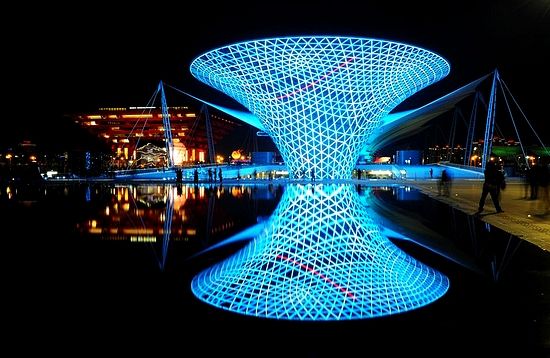
Beautiful night scene of the Shanghai World Expo Park (File photo: Li Zhenyu)
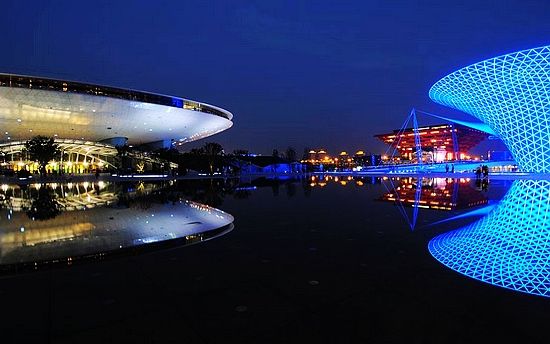
The beautiful night scene in the Shanghai World Expo Park (File photo: Li Zhenyu)
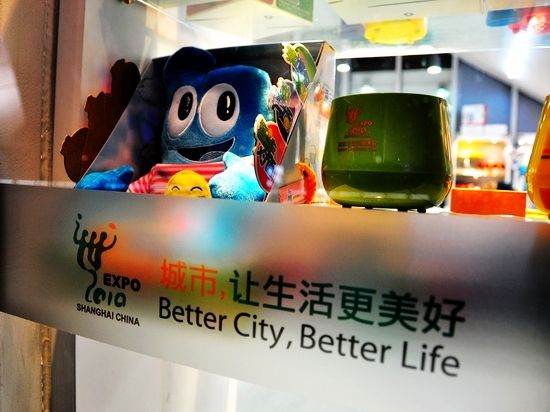
The theme of the 2010 World Expo, "Better City, Better Life,” had distinctive features of the modern times. (File photo: Li Zhenyu)
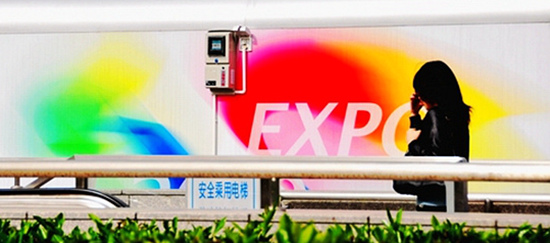
Entering the splendid Expo (File photo: Li Zhenyu)
Japan Pavilion: The purple silkworm island

Covered by a purple membrane material, the Japan Pavilion was known as the "purple silkworm island." (File photo: Li Zhenyu)
Known as the "purple silkworm island," the Japan Pavilion was one of the hottest pavilions at the Shanghai Expo Park. Covering 6,000 square meters, it was among the largest foreign pavilions.
Philippines Pavilion: The Performing Cities

The Philippines Pavilion (File photo: Li Zhenyu)
Themed "Performing Cities," the Philippines pavilion at World Expo 2010 was indeed visually-striking with its facade decorated with eye-catching collages.

The Philippines Pavilion inside (File photo: Li Zhenyu)
Strolling inside the pavilion, you may feel as if you were in the exotic land of the Southeast Asian country with original live performances and rich-flavored local customs.
 Fire brigade in Shanghai holds group wedding
Fire brigade in Shanghai holds group wedding Tourists enjoy ice sculptures in Datan Town, north China
Tourists enjoy ice sculptures in Datan Town, north China Sunset scenery of Dayan Pagoda in Xi'an
Sunset scenery of Dayan Pagoda in Xi'an Tourists have fun at scenic spot in Nanlong Town, NW China
Tourists have fun at scenic spot in Nanlong Town, NW China Harbin attracts tourists by making best use of ice in winter
Harbin attracts tourists by making best use of ice in winter In pics: FIS Alpine Ski Women's World Cup Slalom
In pics: FIS Alpine Ski Women's World Cup Slalom Black-necked cranes rest at reservoir in Lhunzhub County, Lhasa
Black-necked cranes rest at reservoir in Lhunzhub County, Lhasa China's FAST telescope will be available to foreign scientists in April
China's FAST telescope will be available to foreign scientists in April "She power" plays indispensable role in poverty alleviation
"She power" plays indispensable role in poverty alleviation Top 10 world news events of People's Daily in 2020
Top 10 world news events of People's Daily in 2020 Top 10 China news events of People's Daily in 2020
Top 10 China news events of People's Daily in 2020 Top 10 media buzzwords of 2020
Top 10 media buzzwords of 2020 Year-ender:10 major tourism stories of 2020
Year-ender:10 major tourism stories of 2020 No interference in Venezuelan issues
No interference in Venezuelan issues
 Biz prepares for trade spat
Biz prepares for trade spat
 Broadcasting Continent
Broadcasting Continent Australia wins Chinese CEOs as US loses
Australia wins Chinese CEOs as US loses